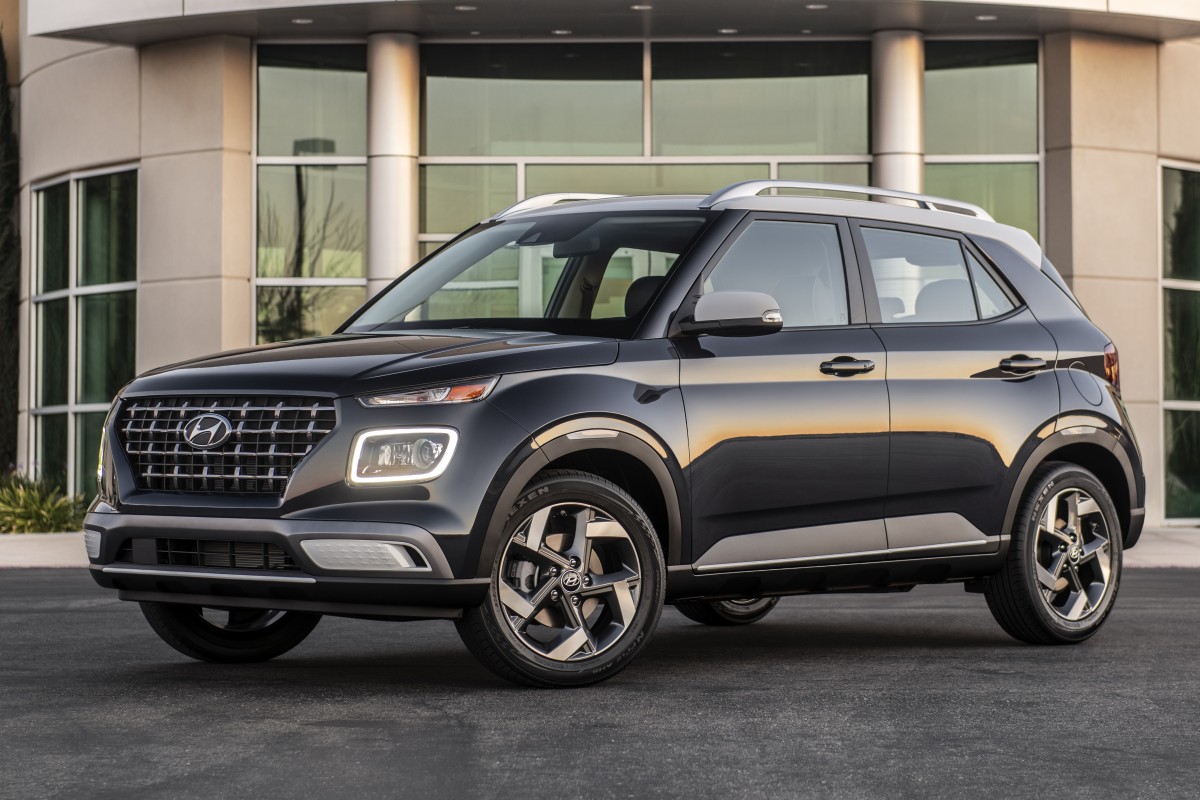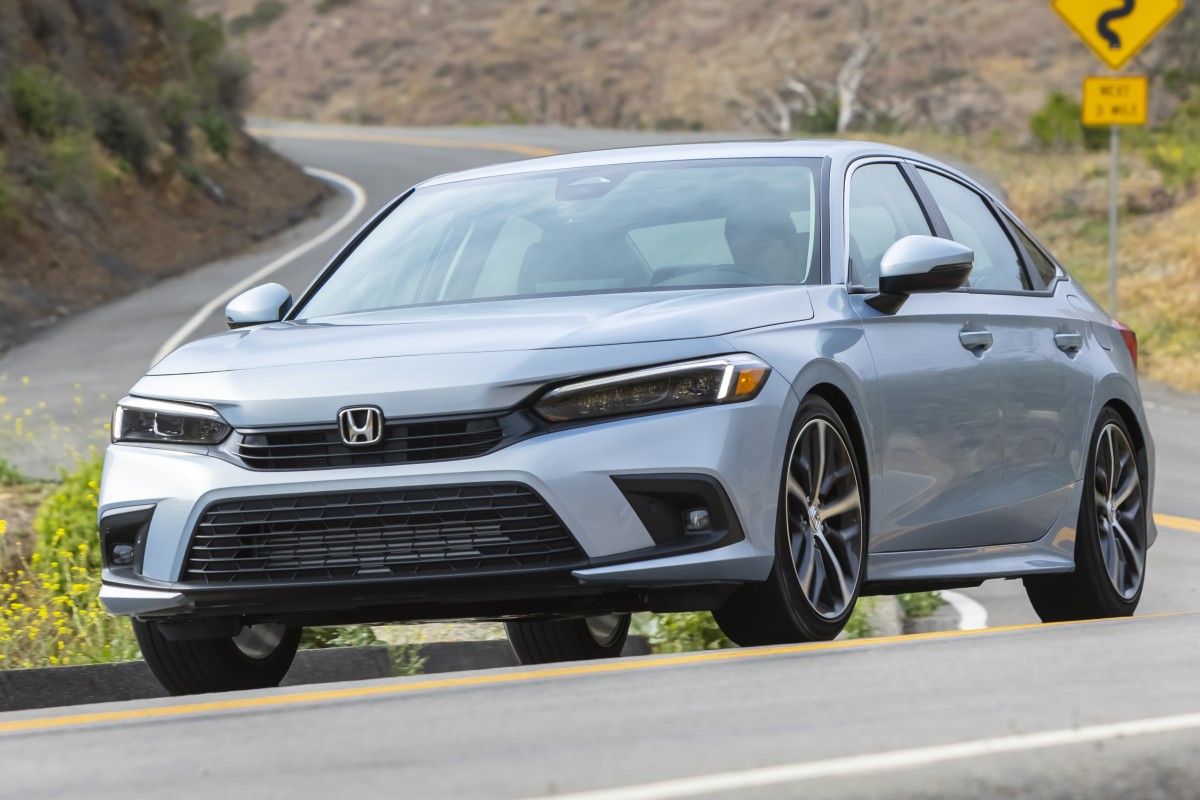The Hyundai Elantra has been the Korean automaker’s compact car mainstay since the early 1990s. When it was first introduced, it sold primarily on its low price and gradually replaced the bargain-basement 1980s-era Excel, but Hyundai began materially improving it in the mid-1990s. After the late 1990s Asian Financial Crisis hammered South Korea’s carmakers, Hyundai Motor Group got serious about creating a master plan to improve both its products and those of Kia, which it merged with in 1998.
The first step was the 10-year powertrain warranty, introduced in 1999, but the first car to feel the influence of the product master plan was the third-generation Elantra in 2001. That version of the Elantra was the first to raise the bar to be truly competitive with the Ford Focus, Honda Civic, Nissan Sentra, and Toyota Corolla, and the model has been getting steadily nicer and larger ever since.
In years past, Hyundai has offered the Elantra mainly as a five-passenger compact sedan, but also as a five-door hatchback, a five-door wagon, and a two-door coupe. As diverse as that sounds, however, the Elantra has always had a four-cylinder engine driving the front wheels. The Elantra has never been available in all-wheel drive (AWD), and the Elantra Hybrid only recently joined the lineup.
The latest Elantra, new in 2021, is among the roomiest and most refined compact cars on the market, and it offers lots of choices for different buyers, including hybrids and a dedicated performance version. Anyone shopping for a practical, durable, and stylish small car should put the Hyundai Elantra sedan on their shopping list. And the industry-leading warranty? Unlike 20 years ago, it’s now more of a bonus rather than the primary reason to consider the Elantra.
Not all Elantras are alike, however, so we’ve assembled information here about all of this popular compact’s generations since 2000. You’re unlikely to find very many first- or second-generation 1990s Elantras for sale (at the time of this writing, only one such model, a 2000 sedan, was for sale on CarGurus) and they generate little collector interest, but if you do want one, inspect carefully. They’re not as reliable as later versions.
Hyundai Elantra Buying Guide: Cost, Reliability, and the Best Years to Buy
- Frequently Asked Questions
- Hyundai Elantra Pros and Cons
- Hyundai Elantra Generations
- Seventh Generation (2021-present)
- Sixth Generation (2017 to 2020)
- Fifth Generation (2011 to 2016)
- Fourth Generation (2007 to 2010)
- Third Generation (2001 to 2006)
Frequently Asked Questions
Which Hyundai Elantra years are the best?
Undoubtedly, the current-generation Elantra, introduced for model year 2021, is the most refined, roomiest, and best-finished of all Elantras. It also offers many different choices. Among older Elantras, the 2007 to 2011 models rate higher for reliability than some newer choices, but the 2009 models seem to have more problems than the others. The hatchback Elantra GT was also less of a known quantity in those years because it was slightly different from the regular models but sold in smaller quantities. 2001 to 2005 models are also durable, and 2018 through 2020 models have above-average repair records according to outlets like Consumer Reports.
What are the worst Hyundai Elantra years?
2012 through 2017 models seem to have the worst repair records, but fifth-generation 2012 and 2013 Elantras fare especially poorly, with complaints in lots of areas, mechanical, cosmetic, and electrical. 2017 models also have a below-average reliability record according to outlets like CarComplaints and Consumer Reports, but it isn’t as bad as those two earlier years. We don’t include the first-generation Elantra in our guide here, but it’s also not a quality machine, and we’d steer clear of one so old.
Is a used Hyundai Elantra a good deal?
Yes, it can be. The Elantra generally costs less than equivalent Honda Civics and Toyota Corollas, though not by much in recent years. Older Elantras also didn’t usually offer performance models like Honda’s Civic Si or hybrid powertrains. 2011 to 2022 models without push-button starters and engine immobilizers are also particularly vulnerable to theft, which can mean higher than normal insurance rates, negating some of the advantages of their lower prices, but 2001 to 2010 models are cheap to buy and run.
Hyundai Elantra Pros and Cons
Pros:
- Plenty of value
- Great warranty
- Plenty of room and technology in the current generation
Cons:
- Dull driving dynamics, weak base engines
- Polarizing styling
- Some questionable interior materials
Hyundai Elantra Generations
## Seventh Generation (2021-present) In late 2020, the seventh-generation Elantra burst onto the scene with a whole new look and an available hybrid powertrain that returns an EPA fuel rating of 54 miles per gallon combined. While this latest Elantra dropped the hatchback GT model, it more than made up for this by offering interior room on par with midsize cars of only a few years earlier and by offering many more choices, including a high-performance N model.
The Hyundai Elantra SE trim, Hyundai Elantra SEL trim, and Hyundai Elantra Limited trim all get a 147-horsepower 2.0-liter four-cylinder mated to a continuously variable transmission (CVT). It’s a modest powerplant, but delivers acceptable performance and very good fuel economy, up to 41 mpg on the highway. Elantra Hybrids use a 1.6-liter four and an electric motor with only 139 system horsepower, but gas mileage is even better.
The Elantra N-Line looks fast and gets a more powerful 1.6-liter turbocharged four with 201 horsepower mated to a seven-speed dual-clutch automatic transmission. If that’s not enough, there’s also the Elantra N, with a 276-horsepower 2.0-liter turbo and a choice of either a six-speed manual transmission or an eight-speed dual-clutch automatic. It also boasts a variety of handling tweaks that make it a very fun, track-capable machine. Car Gurus reviewed the 2022 Hyundai Elantra N and gave it high marks averaging 8.7 out of 10, but all of these latest Elantras handle better than any previous version.
Depending on the trim, buyers were treated to an 8-inch touchscreen with wireless Apple CarPlay and Android Auto connectivity. A larger 10.25-inch touchscreen came with the Limited trim, but it makes smartphone tethering wired. Every 2021 Hyundai Elantra also got Hyundai’s SmartSense suite of advanced driver-assistance systems. Standard features included forward-collision warning with pedestrian detection, blind spot monitoring, automatic emergency braking, lane-departure warning, lane-keeping assist, automatic high beams, and a driver-attention warning system.
These Elantras are all still under warranty, and they’re easily the best of all the Elantra generations, which makes them a very good used vehicle prospect. They’re also more theft-resistant than the previous generation. It’s possible to find low-spec models in good shape for as little as $15,000, but newer years and higher trims will run more, with many examples falling between $17,000 and $22,000.
At the upper end, that’s nearly as much as a brand-new 2024 base model. You will get more equipment buying used, but used buyers don’t get the full 10-year powertrain warranty. Certified Pre-Owned models are also a great option here, as they come with a little bit more warranty coverage. Elantra Ns are expensive, and as that model has limited availability used, it’s probably better to buy one new.
Sixth Generation (2017 to 2020)
With the sixth-generation Elantra, Hyundai toned down the sedan’s polarizing looks in favor of a more conservative and upscale appearance. That didn’t last long; A 2019 freshening added dubious geometric shapes that, depending on the trim level and viewing angle, can be downright jarring. Visually, this wasn’t Hyundai’s strongest effort.
It’s also easy to get confused by the Elantra GT. 2017 Elantra GTs were leftovers from the previous generation model. For 2018, a completely new and different Elantra GT debuted. Based on the European i30, the Elantra GT is the best version of this car. It looks much nicer and has more room. Fold the rear seats down and cargo space expands from 24.9 to 55.1 cubic feet.
Both versions of the sixth-generation Elantra have nicer interiors than ever, modern infotainment and safety features, and and available 201-horsepower 1.6-liter turbocharged engine.
Three engine choices are available, but most Elantras have the standard 147-horsepower 2.0-liter four-cylinder with a six-speed manual or conventional automatic transmission. In 2020 a continuously variable transmission (CVT) replaced the automatic in the sedan. Additional choices include a rarely-ordered 128-horsepower 1.4-liter and the punchy 1.6-liter turbo with manual or dual-clutch automatic transmissions, depending on the application. Fuel economy ranges from 25 to 36 mpg in combined driving, depending on powertrain.
In 2017, CarGurus gave the Elantra sedan an overall rating of 8.8. A test of the refreshed 2019 Elantra sedan garnered a score of 8.2. Notably, the sixth-gen Elantra sedan and GT earned “Top Safety Pick” or “Top Safety Pick+” designations from the Insurance Institute for Highway Safety (IIHS) every year it was on sale. On the negative side, these models are some of the ones that are at the heart of Hyundai’s theft vulnerability problem, though there are many steps owners can take to safeguard their cars.
Early sixth-gen Elantras can be had for as little as $9,000 in good condition, which is a pretty good deal, though 2017 models don’t have a very good reliability record. Models with the 1.6-liter turbo will cost more, but most really nice Elantras in this era range between $11,000 and $17,000. It doesn’t seem worthwhile to spend more than $20,000 on one given that there are now plentiful examples of the newer seventh-generation model around for that price.
2018 to 2020 Elantra GTs are harder to find and a little pricier than sedans, but a worthy upgrade.
Fifth Generation (2011 to 2016)
The dramatically styled fifth-generation Hyundai Elantra first turned heads for the 2011 model year. With its almost sensual body swells, flowing design, and attractive fastback silhouette, the Elantra made buyers take notice, though reactions to such a bold design were mixed. Comparatively, its mechanical twin, the Kia Forte, was a wallflower in the compact car segment. Hyundai also offered the widest range of bodies in the Elantra’s history for this generation.
The Elantra sedan came out first, joined by a two-door coupe and a five-door hatchback for 2013. The Elantra Coupe was a slow seller and had been discontinued by 2015. The Elantra GT hatchback, replacing the previous Elantra Touring, remained available through 2017, overlapping with the sixth-generation sedans. This time, the Elantra GT was much closer to the sedan in style and feel than the Touring had been or the later 2018 model would be. In 2011 and 2012, that old Elantra Touring continued prior to the debut of the hatchback GT. That model is rare, but among the best buys in these years.
A 148-horsepower, 1.8-liter four-cylinder engine was standard, paired with a manual or automatic transmission. In 2014, Hyundai added a more powerful 2.0-liter four-cylinder that made 173 hp. Fuel economy ranged from 27 to 31 mpg combined. As with the subsequent sixth generation, the fifth-gen Elantra earned good marks for safety, though it didn’t clinch quite as many IIHS “Top Safety Pick” awards as its successor.
Though it had few recalls, this version of the Elantra has a mixed reliability record. Some sources like the Dashboard Light index, give it pretty average ratings, while others, like Consumer Reports and CarComplaints, rate it the worst of all Elantra generations since 2000. 2012 and 2013 models seem to come in for particular criticism across the board, with complaints about the electrical and HVAC systems, suspensions, engines, brakes, and overall build quality. These models are also some of the most theft-vulnerable Elantras.
The good news is, they’re cheap. Elantra Tourings from these years can be found in good shape with under 70,000 miles for about $8,000. The very best and lowest-mile sedans can cost up to about $14,000, but it’s easy to find good ones for $6,500 to $10,000. All things considered, the 2011-2012 Touring models are the best of the lot.
Fourth Generation (2007 to 2010)
Building on the success of the third generation, the fourth-generation model arrived for the 2007 model year.
At first, the fourth-generation Elantra was only available as a five-passenger sedan, but starting in 2009, a hatchback called the Elantra Touring arrived. Based on the European Hyundai i30, it boasted more enjoyable driving dynamics and remained in production through the 2012 model year. The Elantra Touring is both better looking than the anonymous sedan and more useful since it’s basically a small station wagon and not dissimilar to some modern subcompact crossovers.
All fourth-generation Elantras had a 138-horsepower, 2.0-liter four-cylinder engine with a manual or automatic transmission. Fuel economy ranged from 26 to 32 mpg in combined driving. For 2010, Hyundai introduced a Blue trim level marketed as a more eco-friendly version of the sedan, but all it did was bump the highway fuel economy number from 34 to 35 mpg—and it only managed that with the manual transmission.
The fourth-generation Elantra proved to be fairly reliable, too, though complaints seem to center on the braking system and premature brake wear. There was a fuel pump recall in 2008, and the 2008-10 models saw recalls for power steering, but these models are fairly trouble-free, with the best repair record of any Elantra generation according to some sources, including Dashboard Light. They’re also not any more vulnerable to theft than their contemporaries like the Nissan Sentra or Ford Focus. They’re not very exciting to drive though, or look at, and they don’t have as many features as later Elantras.
Given that the newest of these are now 14 years old, they’re getting harder to find. They’re very affordable though, and good examples with under 80,000 miles on the odometer should cost only about $6,000 to $9,000. The Touring may sell for a little more, and it continued into 2012, so if you like it, there are a few newer ones to try out. They don’t cost much more, either.
Third Generation (2001 to 2006)
It wasn’t until Hyundai introduced the third-generation Elantra that people started taking the company’s vehicles seriously. In part, that was down to word of mouth about Hyundai’s lengthy new warranty (which had debuted in 1999), but also because of the many improvements made to this Elantra versus its predecessor. While some buyers lamented the discontinuance of the former Elantra station wagon, most people liked the new car’s more sophisticated look and feel.
Admittedly, the third-generation Elantra wasn’t the best-looking compact car you could buy at the time, but its workhorse nature was enough to turn Hyundai’s reputation around. It also came along at a time when Honda and Toyota seemed to lose interest in materially improving their competing offerings, so the Elantra looked much better in comparison to the Civic and Corolla than it had in previous generations, even if it still had plenty of “cheap car” stigma leftover from the 1990s. Hyundai also made many more features standard, including a passenger’s side airbag, power locks, air conditioning, power steering, and power windows.
First introduced as a sedan for 2001, the new Elantra lineup gained a five-door hatchback for 2002. Both had a 2.0-liter four-cylinder engine with a manual or automatic transmission and were, of course, front-wheel drive (FWD). The third-gen Elantra kept this engine all through its run, with only minor changes in horsepower ratings and tuning (they all made between 135 and 140 horsepower).
In spite of its impressive warranty, earlier versions of the third-generation Elantra were recalled several times for braking, suspension, and fuel tank issues pertaining to the 2001-2003 models. A few airbag problems popped up, too, but they were unrelated to the massive Takata airbag recall. In general, however, the repair record was much better than the first two generations, and the car more durable in the long term. In places where cars don’t rust, you can still find plenty of them commuting around, though age has reduced their numbers.
They’re cheap if you can find them though, and even really nice ones generally don’t cost more than $6,000. If you really need a bargain-basement commuter, it’s not a terrible choice, though not much more will buy you newer examples of Civics and Corollas.





